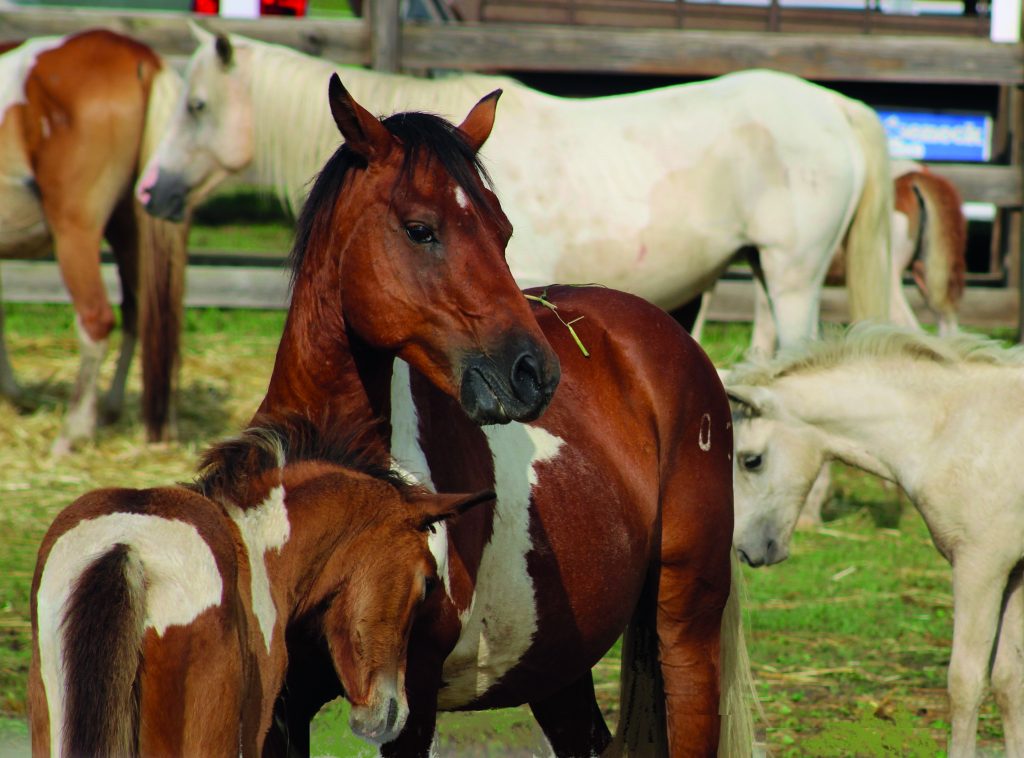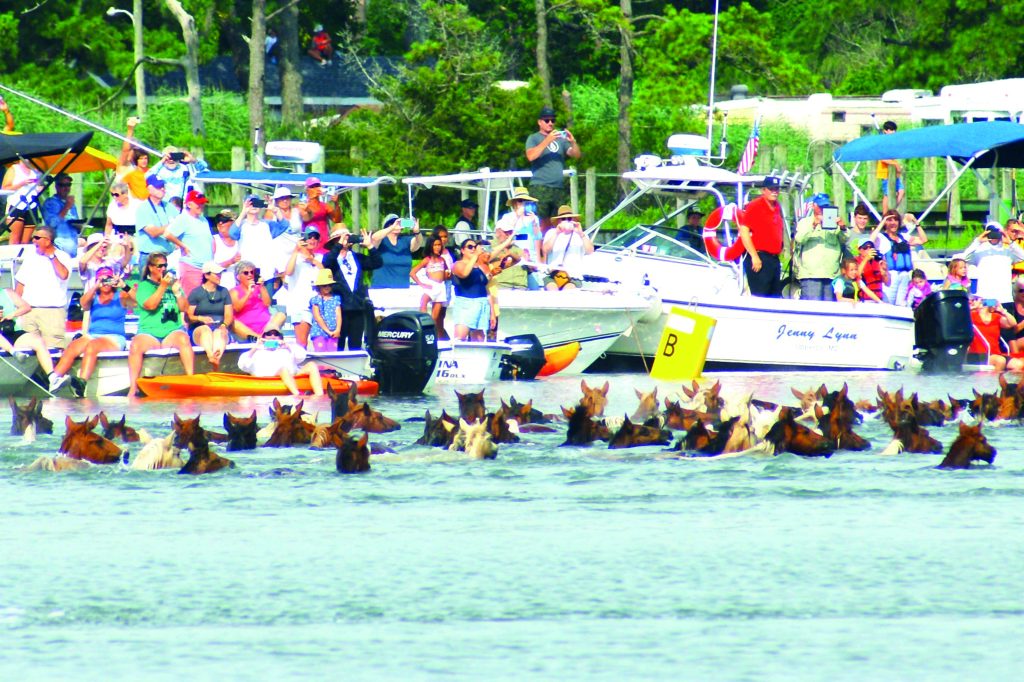
This article originally appeared in Coastal Virginia Magazine, May/June 2025. Photos by Lois Szymanski.
The Virginia heat and humidity pressed down on me like a heavy blanket as I stood waiting at the edge of the channel. My shirt clung to my back, and I swatted absently at the relentless mosquitoes and biting flies that seemed determined to make a meal of me. Despite the discomfort, I couldn’t help but feel a flutter of anticipation—the same feeling I’d had decades earlier when I had stood in nearly that same spot as a wide-eyed fourteen-year-old.
Back then, my parents had driven our family up Highway 13 from North Carolina, my brothers and I bickering in the backseat until the promise of seeing the wild Chincoteague ponies silenced our squabbles. Now a much older me had made the journey alone, drawn back by memories that had grown hazy but never disappeared completely.
As I waited for the ponies to arrive, I recalled the local lore about these regal animals. Like all tales of mythical beasts, their origins are shrouded in uncertainty. The romantic version—the one I preferred as a teenager—suggested they are descended from Spanish breeds like their Outer Banks cousins, survivors of ancient shipwrecks who found sanctuary on these isolated islands.
The more likely but mundane truth is that they are descendants of horses brought by early European settlers that either escaped or were deliberately released, adapting over generations to the harsh coastal environment.
A growing commotion across the channel pulled me from those thoughts. First came the sounds—shouts and whistles echoing from the maritime forest of Assateague Island. Then the Saltwater Cowboys, those volunteer firemen renowned for their horsemanship emerged, leading what looked like a hundred shaggy, wild ponies toward the water’s edge.
“Here they come,” murmured a woman beside me, lifting her camera.

The ponies hit the water with surprising confidence. Some entered tentatively, while others seemed to know exactly what to do, sliding into the channel with practiced ease. Their compact, muscular bodies proved perfect for swimming as they paddled across, snorting and jostling one another. The sight triggered that same pure adrenaline rush I had felt watching this same spectacle as a teenager.
“How do the foals fare during the swim?” I asked the woman with the camera, suddenly concerned about the smallest and youngest of the herd.
“Oh, they’re strong swimmers,” she assured me with the casual confidence of someone who’d witnessed this dozens of times. “The crossing’s only about three to five minutes, depending on conditions. Besides, we’ve got cowboys in boats watching out for them and vets standing by.”
In fact, there was one eager stallion which for many years beat the other others to the punch. In her new book Out of the Sea Lois Szymanski recounts how in 2006 a stallion dubbed Miracle Man decided to get a jump on things with his large band of mares and foals. When he saw the cowboys scouting the herds on Assateague the day before the swim, he apparently sensed what was next. He rounded up his brood and drove them across the channel to Chincoteague where pony committee members scrambled to meet and escort them to the carnival grounds. Miracle Man did the same thing for next six years, always leading the first herd to arrive on Chincoteague Island.
I watched the lead stallion reach the Chincoteague side, water streaming from his coat as he scrambled onto land. The others followed, and just like that, the swim was over as the herds headed towards the pen in town to be corralled until the auction the next day.
The auction was founded in 1925 by a group of 25 men who organized the Chincoteague Volunteer Fire Company after a series of two fires devastated the town. Their plan was to purchase a fire truck, and to pay for the equipment they would drive their wild bands across the channel from their home on Assateague and into town where the auction took place. The proceeds were used as the initial payment on the equipment, a tradition that still funds the Fire Company today. In fact, the Fire Company legally owns the horses and is responsible for managing the herd and their well-being.
I followed the herd to the carnival grounds, remembering how my teenage self had clutched a copy of Misty of Chincoteague during our family trip. Marguerite Henry’s beloved children’s book had put this event on the map in 1947 and is still the reason thousands of visitors descend on this tiny barrier island town.
I then realized why I had felt compelled to return after all these years. In a world that changes relentlessly, there was something profoundly comforting about this century-old ritual—wild ponies that live by the wild sea swimming to temporary captivity, some to be auctioned to maintain their own population’s health, all to support the fire company that had been protecting this community since those devastating fires in 1925.
Some things, I thought as the last pony was led into the pen, really do stay the same—mosquito bites, summer heat, and the magic of watching wild things move between worlds, just as they had when I was fourteen, just as they had for a hundred years, and just as they likely would for a hundred more.
